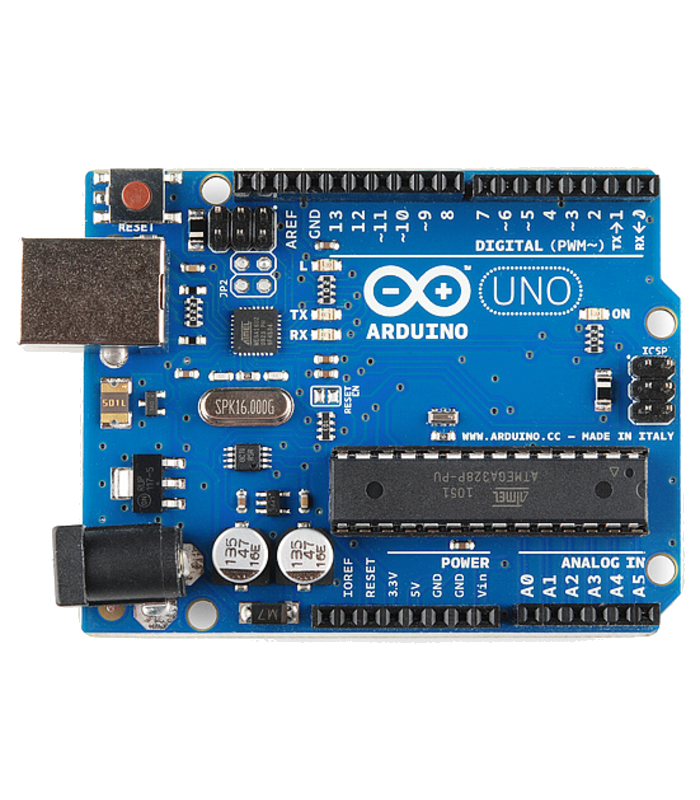Introduction: In the world of robotics and electronics, there’s a tiny yet powerful platform that has captured the hearts of hobbyists, students, and professionals alike – the Arduino board. This small and versatile device has revolutionized the way we approach robotics, enabling enthusiasts to bring their imaginative ideas to life with ease. In this blog, we’ll explore the fascinating world of the Arduino board and its impact on robotics, from beginners’ projects to advanced innovations.
The Arduino Phenomenon: The Arduino board, born out of the Ivrea Interaction Design Institute in Italy, was first introduced in 2005. It was designed to be an open-source platform that simplified programming and prototyping for electronic projects. The Arduino’s user-friendly interface and extensive community support quickly gained traction, making it a go-to choice for anyone interested in robotics and electronics.
Empowering Creativity: Getting Started with Arduino: One of the most remarkable aspects of the Arduino board is its accessibility. Beginners with no prior programming or electronics knowledge can easily dive into the world of robotics. The Arduino IDE (Integrated Development Environment) provides a simple and intuitive platform for writing code, uploading it to the board, and seeing immediate results. This hands-on approach encourages experimentation and learning by doing.
From Blinking LEDs to Advanced Robotics: The journey of learning with Arduino often starts with simple projects like making an LED blink or creating a basic sensor setup. These initial steps lay the foundation for more complex projects that involve motor control, wireless communication, and data processing. As skills develop, enthusiasts can build autonomous robots, interactive installations, home automation systems, and much more, all powered by the versatile Arduino board.
The Arduino Ecosystem: Modules, Shields, and Sensors: What makes the Arduino board even more exciting is its ecosystem of add-on components. Modules, shields, and sensors can be easily integrated to expand the functionality of your projects. Whether it’s adding GPS tracking, environmental sensing, touch interfaces, or wireless connectivity, the vast array of compatible components allows creators to tailor their projects to specific needs.
Real-World Applications: Bringing Arduino into Practical Use: Beyond the realm of hobbyist projects, Arduino-based robotics finds its way into various real-world applications. From designing smart agriculture solutions to creating assistive devices for individuals with disabilities, the adaptability of Arduino enables innovators to address pressing challenges. Startups and companies often use Arduino prototypes to validate concepts before moving on to more complex systems.
Community and Collaboration: The Heart of Arduino: One of the defining features of the Arduino movement is its strong and active community. Online forums, tutorials, and maker spaces provide a platform for enthusiasts to share knowledge, seek guidance, and collaborate on projects. This collaborative spirit fosters an environment of continuous learning and innovation, inspiring newcomers and veterans alike.
Challenges and Growth: Pushing the Boundaries: While Arduino offers a friendly entry point, challenges inevitably arise as projects become more ambitious. Memory constraints, power management, and optimizing code for efficiency become crucial considerations. However, these challenges drive creators to delve deeper into electronics and programming, leading to personal growth and mastery.
Conclusion: Empowering Robotic Dreams with Arduino: The Arduino board has democratized robotics, making it accessible to people of all ages and backgrounds. Its user-friendly interface, vast ecosystem, and supportive community have opened doors to endless possibilities. From beginners experimenting with LEDs to experts building complex robotics systems, Arduino continues to be a catalyst for innovation and creative exploration in the world of electronics and robotics. So, whether you’re a student, hobbyist, or professional, grab an Arduino board and embark on a journey of limitless imagination. Your robotic creations await!















